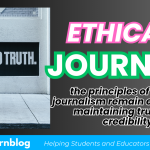What is the PQ4R Method that’s been used all over the world?
PQ4R stands for Preview, Question, Read, Reflect, Recite and Review. It is a great strategy to improve our comprehension and understanding about things.
- P – Preview: Skim the material to get an overview. Look at headings, subheadings, images, summaries, and any other standout elements to get a sense of what the material covers. It is also where we are going to test our analysation skills and how accurate our understanding on a certain topic is. Previewing materials can give us a background knowledge that we can use in the future even when we are giving facts about something.
- Q – Question: Turn headings and subheadings into questions. This step encourages active engagement by making you think about what you’re about to learn. For example, if the heading is “The French Revolution,” a question might be, “What were the causes of the French Revolution?” Asking questions can be used to add more understanding. Additionally, questions from our mind can turn into a huge comprehension and learnings from things.
- R – Read: Read the material thoroughly. Focus on answering the questions you formed in step 2. Reading it with a sense of humor could make you more literate through the materials that you read from the news, social media, even online websites. Reading while reviewing for your exams could also help you to manage every information that you get from books and materials.
- R – Reflect: Think about the material. How does it connect with what you already know? How does it answer your questions or fit into your broader understanding? Reflection allows you to understand the significance of the paragraph in the context of your broader knowledge. It also encourages deeper thinking about the consequences of climate change and the need for action.
- 5. R – Recite: Summarize or paraphrase the material in your own words. This reinforces your understanding and memory. You can do this aloud or in writing. Reciting ensures that you grasp the core message of the paragraph. It reinforces your understanding and helps you identify the most important points. If you struggle to summarize the paragraph, it signals areas where you need to focus more attention.
- 6. R – Review: Go over the material again, checking your understanding and ensuring you remember key points. This can be spaced out over time for better long-term retention (spaced repetition). Regular review solidifies the information in your long-term memory, making it easier to recall later. Spaced repetition (reviewing after increasing intervals) is especially effective for deep learning.

To deepen your understanding. Read these paragraphs for you to understand the PQ4R Method;
1. Preview
The first step in the PQ4R method is to preview the material. This means skimming through the text before reading it in detail. Look at the title, headings, subheadings, any bold or italicized words, and any images or graphs. This helps you get a sense of the main topics and structure of the material. For example, in a chapter about climate change, you might notice headings like causes, effects, and solutions. Previewing primes your brain to know what to expect and makes it easier to understand the material when you read it more thoroughly.
2. Question

After previewing, the next step is to formulate questions based on what you’ve seen in the preview. These questions will guide your reading and help you stay focused. You might ask things like, “What are the key human activities causing climate change?” or “How can renewable energy solutions reduce emissions?” By turning the content into questions, you actively engage with the material instead of passively absorbing it. These questions help frame your purpose for reading, making it easier to identify important details as you move through the text.
3. Read, Reflect, Recite, Review
Once you begin reading the material in-depth, do so with your questions in mind. As you read, focus on finding the answers to the questions you formulated in the previous step. Afterward, take time to reflect on what you’ve learned and how it connects to prior knowledge. Then, recite or summarize the key points in your own words to reinforce your understanding. Finally, reviewing the material regularly (e.g., after a day or a week) helps solidify your learning and ensures long-term retention. By repeating this process, the PQ4R method makes studying more structured and effective, enhancing both comprehension and memory.
By following this structured method of Preview, Question, Read, Reflect, Recite, and Review, you create a deeper, more active connection with the material, improving your ability to understand, remember, and apply what you’ve learned.











